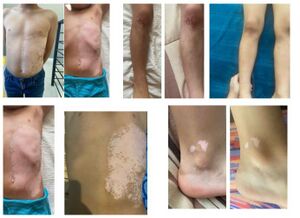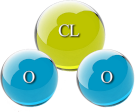Boy recovering from vitiligo
Case Report: Treatment of Vitiligo in a 10-Year-Old Boy
Patient Information:
- Name: Not disclosed for confidentiality
- Age: 10 years
- Location: Xalapa, Veracruz, Mexico
- Occupation: Not applicable
Referring Practitioner: Guillermo Marín H., Complementary Alternative Medicine Therapist
Background: The patient presented with a diagnosis of vitiligo, having undergone multiple dermatological treatments over the past seven years, including various medications, topical ointments, ultraviolet light therapy, and other interventions. Despite extensive treatment, the patient's condition had not improved, leading to a progressive increase in skin lesions. The child's mother, concerned about the psychological impact of the disease, sought alternative therapeutic options upon recommendation from a mutual acquaintance.
Assessment: Based on the clinician's expertise in quantum physics and particle mechanics, the hypothesis was made that vitiligo may be a parasitic disease at an intracellular level. The proposed mechanism involved a disturbance in the subatomic structure of skin cells, leading to an imbalance in melanin production.
Treatment Protocol: The treatment regimen was designed to address both detoxification and restoration of skin pigmentation.
- Detoxification Phase:
- Micronized Zeolite: ¼ teaspoon mixed in half a glass of water daily for one month to assist in heavy metal elimination.
- Chlorine Dioxide Protocol (Protocol C): 10 ml of chlorine dioxide administered in 8 divided doses throughout the day.
- Digestive Parasite Elimination:
- Half a glass of water with 1 ml of Black Walnut mother tincture on an empty stomach for 40 days.
- Followed by 15 drops each of Mugwort Annua and Clove mother tinctures in half a cup of water.
- Diatomaceous Earth: 1 tablespoon daily mixed in water.
- Bath Protocol (Protocol B):
- Bathing with 60 activated drops of Sodium Chlorite (25%) and 60 drops of 4% Hydrochloric Acid in bathwater. Recommended frequency: every three days for two to three months, with the addition of natural sea salt to enhance osmotic balance.
- Topical Treatment:
- Daily application of a chlorine dioxide spray formulation (40 ml of chlorine dioxide mixed with 1 ml of 90% DMSO) applied twice daily on affected skin areas.
- Enema Protocol (Protocol E):
Follow-Up & Results: Initial results were observed within two to three weeks, as evidenced by gradual repigmentation of affected areas and overall improvement in skin health. Notably, the child exhibited improvements in physical condition and general well-being alongside dermatological recovery. Continuous monitoring and adherence to treatment were emphasized, along with dietary modifications to eliminate processed foods.
The patient continues to show positive progress, with significant repigmentation noted and a reduction in the visibility of lesions. The mother expressed satisfaction with the treatment outcomes.
Conclusion: This case illustrates the potential for complementary alternative medicine approaches, specifically involving quantum frequency therapies and chlorine dioxide, in managing chronic dermatological conditions like vitiligo. Further research is warranted to validate these findings and establish standardized treatment protocols.
Keywords: Vitiligo, Chlorine Dioxide, Alternative Medicine, Quantum Frequencies, Pediatric Dermatology

